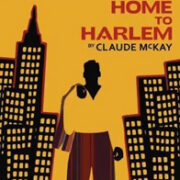The epub format below is for your Apple and Android devices including Send-to-Kindle.
As you may know, Amazon has changed to the epub format to use with the Send-to-Kindle program. A great feature of the Send-to-Kindle program is that the file will go directly to your Library folder, and not have to be searched for in ES File Explorer or another app. If you use the mobi format in Send-to-Kindle, you will now get an error message. You can see instructions about Send to Kindle at https://www.amazon.com/gp/sendtokindle/email.
If you or your students want to download directly from this web site to an Amazon device, you can use the mobi format below. When you find the mobi file in ES File Explorer, it will then open in the Kindle app on your tablet. If you download an epub file to your Amazon tablet, it will also open if you have an app such as Overdrive on your tablet. The Kindle app offers an excellent reading experience to start with. Overdrive may need some customization of font size.
Download mobi file here.
“Claude McKay’s book home to Harlem is depictive of entertainment fun and harships of life growing up black in america during the 1920s. As communities and families struggle to survive while keeping up with turbulent political changes,the author hopes and dreams of unity among his people. A classic with themes of romance friendships class and racial identity.”
Another reviewer in Goodreads:
“I really enjoyed this book. It really transported me back to Harlem in the 1920s. Through the lives of young unskilled African-Americans living and working in Harlem.
“The clothes, the food, entertainment and while sporadic; the political views.
“All in all a great quick read, no surprise that this book was a best seller in its time.”
Finally, the last reviewer:
“McKay’s Home to Harlem is, without a doubt, an under-appreciated classic of the Harlem Renaissance. While it lacks the fame of something like Their Eyes Were Watching God, Home to Harlem is a vital chronicle of the lives of low status blacks in the cultural Mecca of 1920s Harlem. McKay’s protagonist, Jake, is, in some ways, the ideal representation of the common man of Harlem. Instead of living a life of privilege, Jake sponges off women, holds odd jobs, and generally shows himself to be a non-contributor to society. In stark contrast to many protagonists of Harlem Renaissance literature, Jake is neither rural nor well to do. This rarity makes Home to Harlem a fascinating novel. The most lasting contribution of McKay’s novel is the way in which it portrays Harlem. There is a meaningful and visible difference between white life and black life, a divide that, when explored in literature, is nearly always interesting. Not only do McKay’s characters speak, presumably, as blacks did during this time, but they also act in a way that, for better or worse, shows the perceived exoticism of Harlem. While Du Bois’–in my view, wrongly–criticized Home to Harlem for presenting a negative image of American blacks, that is one of the novel’s strongest points: McKay creates characters who act as their real life analogues would. They don’t always represent their race well, they do drugs, they drink, they fight, they fornicate. This novel, not intended as some sort of anthropological exercise to convince whites of the similarity of blacks, paints Harlem as the thrilling, lively, vibrant place that it was. As a result, whether you find McKay stylistically strong or not–he is–, Home to Harlem works brilliantly as, basically, an educational novel, enlightening readers and showing them the amazing place that Harlem is and was.”




Leave a Reply
Want to join the discussion?Feel free to contribute!